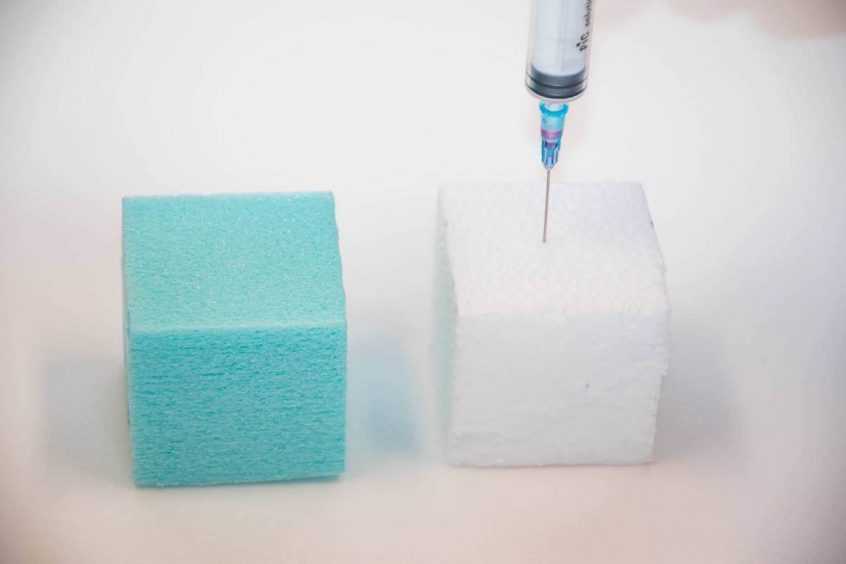Have you ever wondered about the real meaning of a producer’s declaration that his thermal insulation material has a 95% closed cell structure? Obviously, this is a characteristic that you should never disregard when choosing the correct thermal insulation for your home. Much depends on it, as a material’s cell structure greatly affects its behaviour and, consequently, determines and limits the material’s application – whether it may be used below grade, on the facade, on the roof, …
Let us perform a simple experiment to better demonstrate the difference between open-cell structure and closed-cell structure. For the time being, let us disregard all other important factors like cell diameter and load-bearing properties.
Starring: FIBRANxpsand EPS.
Note: The turquoise coloured sample in the left is FIBRANxps, while the white sample on the right is EPS.
For the purpose of this experiment, we have cut two identical samples of each material 5 by 5 cm and inserted a syringe filled with a coloured liquid. We want to see if the coloured liquid will find its way between cells and emerge on the sample walls. If this happens, water can also enter the material and permeate it. Consequently, we should not use permeable thermal insulating material outside the waterproofing, as it would no longer perform its primary task – thermal insulation.
The video above clearly shows how the coloured liquid slowly permeates through the white EPS sample, while the tourquoise FIBRANxps sample remains unaffected as there is no space between its cells and it is impossible for the liquid to enter the material. This is characteristic of closed-celled materials. As opposed to EPS, we can use FIBRANxps without hesitation even outside the waterproofing as it will not take up water or moisture.
Two additional clarifications:
- Why is thermal insulation installed outside the waterproofing?
To protect the waterproofing from damage. - Where do we install thermal insulation outside the waterproofing?
Along the basement walls, in the foundation area and on the flat roof.

 +386 7 39 39 510
+386 7 39 39 510 advice@energyshield.biz
advice@energyshield.biz
